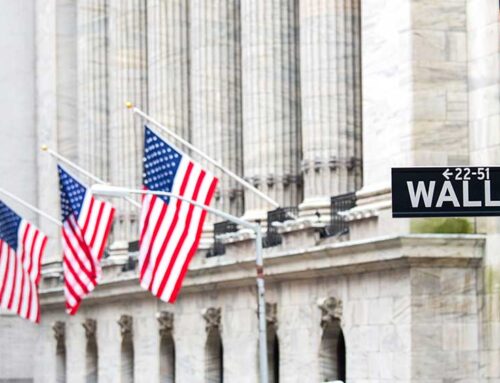Why Fearful Investors Shouldn’t Take the VIXY ETF Bait
March 28, 2025
You’ve probably heard of the VIX Index before—it’s often referred to as the market’s “fear gauge,” a symbolic barometer for uncertainty in the stock market. If you’re a more seasoned investor, you may have tried investing in one of its indirect proxies: the ProShares VIX Short-Term Futures ETF (VIXY). But here’s the thing: the VIX isn’t something to be traded casually or opportunistically. It’s usually better used as a signal or a tool rather than a trade or an investment.
I’m bearish on VIXY over the long term. It’s designed in a way that makes it almost certain to decline in value over time. Even in the short term, I don’t expect much—either more of the same slow drift downward or, at best, flatlining while reassuring unnecessarily frightened investors.
Let’s unpack what the VIX index and VIXY ETF are really doing. The VIX measures the market’s expectations for volatility over the next thirty days based on options pricing mathematically tied to the S&P 500 (SPY). When traders are nervous about what might happen in the market—whether it’s inflation, earnings surprises, or geopolitical risks—they buy options to mitigate risk (hedge) in their positions.
Such options become progressively more expensive, which drives the VIX higher. When the VIX rises, it means fear is rising because investors are happy to pay higher premiums to protect against the downside. When the VIX is low, markets are calm because investors feel less need to insure against market turbulence.
Notably, the VIX index doesn’t say anything about the market’s direction. It doesn’t tell you if prices are about to go up or down—only how turbulent the ride might be. That’s a key distinction a lot of new investors miss. A high VIX means traders expect big moves, but not necessarily downward ones.
Enter VIXY, the ProShares VIX Short-Term Futures ETF. This isn’t a product that tracks the VIX directly. Instead, it holds futures contracts—essentially short-term bets on where the VIX is going next. So, while it tends to move in the same general direction as the VIX, the relationship isn’t one-to-one. When the VIX surges, VIXY typically rises as well, but it lags.
And when things are calm? VIXY tends to bleed out slowly. That’s thanks to something called “roll cost”. The ETF keeps swapping out old futures contracts for newer ones, which includes fees to roll the position from one contract month to the next, with newer contracts tending to be more expensive. That cost gets passed on to the ETF’s value, and over time, it adds up.
At best, VIXY is not a long-term investment in a balanced portfolio. It’s not something investors should buy and hold with aspirations of appreciation over time. VIXY is a tactical tool rather than an outright investment. It shines in moments of panic—think of sudden geopolitical shocks, black swan events, or market-wide sell-offs. When fear spikes, VIXY can act as a lucrative hedge, jumping up quickly and softening the blow to your broader portfolio.
But—and it’s a big but—when market fear recedes, VIXY almost always gives back those gains. And then some. Even in years when volatility was unusually high—take August 2024, for example—VIXY ended the year in the red. That’s because markets eventually calmed down while that persistent rolling cost ate away at VIXY’s net value. In a low-volatility market, VIXY is like a tire with a slow puncture.
So, unless you’re managing risk over very short bursts, VIXY doesn’t really have a place in a traditional portfolio. It’s not a core asset. It’s more like an umbrella: priceless during a storm but rather counterproductive at all other times.
VIXY is currently trading at around $45 per share. That’s a steep drop from $55 earlier this month and from $90 in mid-2024. Clearly, the market has settled down somewhat since then. The fear around tariffs, which drove the earlier March spike, seems to have eased.
According to ProShares, the VIXY’s current holdings are split between CBOE VIX Futures with April and May expirations. VIXY holds 66% of its holdings (5,249 contracts) in the April 2025 future for a notional value of $98.9 million and 34% (2,624 contracts) in the May future for a value of $50.2 million. In total, VIXY’s market value stands at $149.15 million.
Looking at the broader VIX Index, it’s now hovering around 18.5. That’s not high. In fact, it’s pretty normal. It suggests that investors, broadly speaking, are feeling reasonably calm about the current economic conditions—despite what the headlines might be saying. For perspective, during the COVID-19 market panic, the VIX hit around 80. During the peak of the 2008 financial crisis, it also hit around 80. Compared to those numbers, 18.5 is tranquil. Still, it’s essential to recognize the VIX’s limitations. It doesn’t forecast future volatility—it reflects current expectations.
On the flip side, Mandy Xu, Head of Derivatives Market Intelligence at the Chicago Board Options Exchange (CBOT), recently suggested that today’s ultra-low volatility might signify complacency. In her view, investors may underestimate risk. That’s a fair point—and historically, periods of low volatility have often preceded sharp corrections.
But I disagree with this outlook. I think the Trump administration has a firm grasp of the macroeconomic picture. With leaders like Scott Bessent serving as U.S. Treasury Secretary, I believe a strong fiscal hand is at the wheel. The recent market jitters were mostly about tariffs; even companies like Tesla (TSLA) have advised caution. But that narrative seems to be softening. I see conditions turning favorable for interest rate cuts from the Federal Reserve in the second half of 2025 and early 2026. That would likely trigger a rally in equities, not a sell-off.
If you’re eyeing VIX or VIXY right now, my stance is simple: don’t take the bait. Buying into VIXY means betting that things will get worse—fast. With a macro view that considers not just market fundamentals but also policy, geopolitics, and sentiment, I believe the risk-reward balance is tilted in favor of risk-on market behavior and, therefore, bullish equities.
VIXY isn’t a buy here. It’s a signal—one that says investors are breathing easier. And that, in turn, sets the stage for potential stock gains. Investors should resist the urge to fight the calm and instead prepare for the next leg of the current bull market.
Terms and Privacy Policy
Search
RECENT PRESS RELEASES
Related Post




